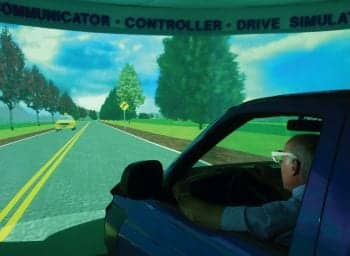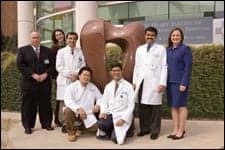 |
Sleep facilities are proliferating as market conditions continue to place increasing importance on accreditation. Accreditation is currently a voluntary process for assessment of sleep facilities, but with more insurers requiring accreditation, it’s best to know your options.
One of the most influential factors impacting market conditions has been recent policy decisions by insurance carriers to require sleep facility accreditation as a precondition for reimbursement of services. Third-party payors increasingly regard accreditation as an objective peer review of compliance with quality standards for sleep services, a commitment to quality and competency, and integration of practice standards. Third-party payors and regulatory agencies are beginning to require laboratory accreditation for sleep study interpretation reimbursement.
While market conditions for providers of sleep services are likely to remain positive, market saturation of sleep facilities in some regions of the country is also on the rise. In these regions where competition for sleep patients is greater and marketing of sleep facilities more vital, market forces appear to be favoring those facilities that have achieved accreditation. If accreditation of sleep facilities becomes a mandate in the future, market growth would likely be greatly restricted, with independent diagnostic testing facilities (IDTFs) being the most affected.1
While accreditation is a time-consuming and costly process requiring facilities to satisfy various criteria before they can receive recognition, the benefits seem to outweigh the obstacles.
“It’s good for the patients, it’s good for the center to want to do that [be accredited]—it encourages ongoing learning, discussion and research, and education for your technicians and physicians to provide better care,” says Samuel A. Fleishman, MD, medical director of Cape Fear Valley Medical Center, Fayetteville, NC, and chair of the AASM accreditation committee.
Two options by which a sleep facility can become accredited include the American Academy of Sleep Medicine (AASM) and The Joint Commission. There are currently 1,313 AASM-accredited sleep centers and 106 AASM-accredited sleep labs, for a total of 1,419 facilities. There are 100 sleep labs/centers currently accredited by The Joint Commission.
 |
| *Source: Joint Commission Resources, [removed]www.jcrinc.com/26813/newsletters/28184/[/removed] |
THE JOINT COMMISSION
The Joint Commission accreditation process differs based on whether the facility is hospital-based or an independent diagnostic testing facility. The majority of hospital-based facilities in the United States adhere to the standards imposed by The Joint Commission, which focuses on demonstrating adherence with quality indicators and patient safety.
The Joint Commission’s approach to accreditation is comprehensive and organization-based, taking steps to make sure sleep centers are assuring patient safety, says Michael Kulczycki, executive director of The Joint Commission’s Ambulatory Accreditation.
If the sleep facility is not hospital-based, The Joint Commission allows accreditation through its Ambulatory Care accreditation pathway. The Joint Commission’s comprehensive accreditation process evaluates an organization’s compliance with its standards as well as other accreditation requirements.
Unlike the AASM, which reaccredits sleep centers every 5 years, The Joint Commission gives an on-site review of its accredited centers every 3 years. “The sleep industry is one in which technology is constantly changing. We [The Joint Commission] feel that it is important to be out there every 3 years to evaluate the sleep centers and the steps they take to ensure the safety of patients,” says Kulczycki.
To earn and maintain The Joint Commission’s Gold Seal of Approval, sleep facilities must undergo an on-site survey by a Joint Commission team and must maintain the survey scheduled at least every 3 years.
AASM Standards for AccreditationStandards that the facilities have to meet in order to receive accreditation from the AASM include:
|
|
*Source: SLEEPCENTERS.ORG from the American Academy of Sleep Medicine, www.sleepcenters.org |
AMERICAN ACADEMY OF SLEEP MEDICINE
Sleep facilities, both hospital and non-hospital-based, can also apply for specific sleep testing accreditation through the AASM. The AASM recognizes two categories of sleep facilities: the comprehensive sleep center that can diagnose and treat all aspects of sleep medicine, and the sleep-related breathing disorders laboratory, a facility that focuses primarily on the treatment of sleep-disordered breathing.
Comprehensive sleep centers must employ a qualified sleep physician certified by the American Board of Sleep Medicine (ABSM) or American Board of Medical Specialties (ABMS). The AASM, like The Joint Commission, has approved a streamlined version of the accreditation requirements to make the accreditation process more accessible and quicker. In contrast to The Joint Commission’s accreditation process that centers on patient safety, the AASM accreditation focuses specifically on personnel standards, patient acceptance policies, facility and equipment standards, protocols, data acquisition, documentation, emergency procedures, and quality assurance.
“The academy’s accreditation process is more clinically focused, ensuring clinical excellence in sleep medicine,” says Fleishman. “Our guidelines are established by research and training. That’s the major idea behind our accreditation.”
In an increasingly competitive market, accreditation can be the factor that distinguishes one facility from the next. Accreditation can increase a center’s credibility and provide a seal of approval that the center meets standards of care. Whether through The Joint Commission or the AASM, accreditation is an option with benefits that every sleep center should consider carefully.
Reference
- Frost & Sullivan Research Service, March 1, 2005. http://www.frost.com/prod/servlet/~.




